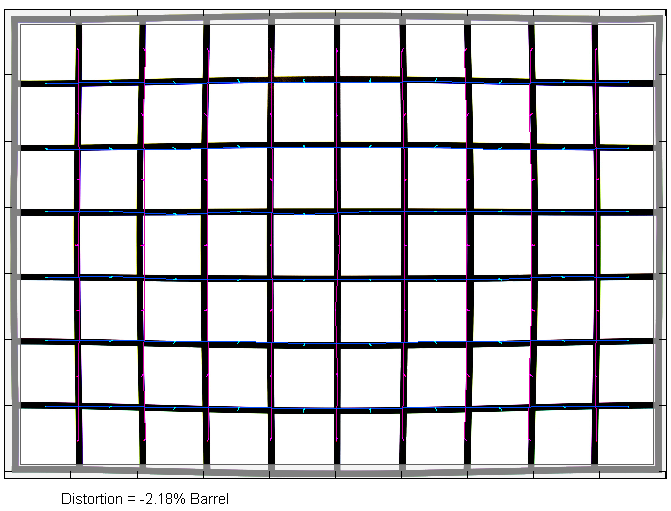|
Sony E 10-18mm f/4 OSS (SEL-1018) - Lab Test / Review - Analysis |
|
Lens Reviews -
Sony NEX
|
|
Page 2 of 2

Distortion
The 10-18mm OSS exhibits a moderate degree (2.2%) of barrel distortion at 10mm - while this is visible, it is actually a very good figure at such a focal length. At the other end of the range, thus at 18mm, it shows a pincushion distortion of 1.8% which is slightly higher than average. Unsurprisingly, the two opposing distortion types even out around 14mm.
|
Move the mouse cursor over the focal length text marks below to observe the respective distortion
|
| 10mm |
14mm |
18mm |

|
Vignetting
The light falloff is certainly a weak spot of the lens - specifically at 10mm where the measured figure at f/4 is even out of range of our usual chart with a value of 2.5EV (f-stops). Stopping down helps but it is not possible to tame the issue. The vignetting eases towards the longer focal lengths but it never drops below 1EV. Now while this may sound pretty bad, it is not uncommon among ultra-wide lenses. However, some counter-measurements during image post-processing or by activating the vignetting compensation in the camera (for JPEGs) may be appropriate.

MTF (resolution)
Given the previous test history on the NEX 7, we expected significant problems with respect to the resolution characteristic. However, we were actually positively surprised - technically at least. At 10mm, the center performance is nothing short of breathtaking. The border performance is good to very good in the relevant aperture range. The corners are sort of soft at f/4 but improve to decent quality at f/5.6 and f/8. The sweet spot of the lens is at 14mm with a very even quality between f/4 and f/8. Even the image corners are good to very good here. The weakest spot of the lens is at 18mm f/4. The center is still very good but the outer image region is soft. However, stopping down to f/5.6 resolves most of the issue though. Diffraction has a limiting effect on image quality starting at f/11 at all focal lengths.
As mentioned, we tested two samples and both showed significant centering problems. The charts shows the results from the 2nd sample (center & best image side).
Please note that the MTF results are not directly comparable across the different systems!
Below is a simplified summary of the formal findings. The chart shows line widths per picture height (LW/PH) which can be taken as a measure for sharpness.
If you want to know more about the MTF50 figures you may check out the corresponding Imatest Explanations
Chromatic Aberrations (CAs)
Ultra-wide zoom lenses tend to struggle a bit with respect to lateral chromatic aberrations (color shadows at hard contrast transitions) - this is also true for the Sony lens. The CA reach an average pixel width of 2-3px at the image borders. This is not extreme (on a 24mp sensor) but certainly visible in many situations.

VerdictUpon first contact, we were positively surprised about the high build quality of the Sony E 10-18mm f/4 OSS - an all-metal lens body are fairly rare these days. This is certainly a wise move by Sony because you are impressed when handling their products in show rooms. However, is the image quality up to the same level ? Well, to some degree at least. The lens is capable of delivering sharp results at medium aperture settings. It struggles a bit at f/4 (10mm & 18mm) in the outer image region but this is probably not all that relevant when thinking of the typical usage patterns at this setting. The amount of CAs is a bit on the high side so it is advisable to correct the issue during post processing. Same goes for the very high vignetting. The amount of image distortion is actually pretty good for such a lens albeit it's visible in critical scenes.
Coming back to the mechanical aspects - the AF works pretty fast and smoothly and the optical image stabilizer is certainly a plus in critical light situations. However, while the build quality of the lens is very fine, we continue to be concerned about the centering quality of Sony products. Ever since we started the NEX tests, we are either terribly unlucky or the centering is as bad as it is - which is unfortunate since we actually buy most NEX lenses just for the testing. Given the comparatively high price tag of Sony lenses, we certainly expect high(er) standards here.
|